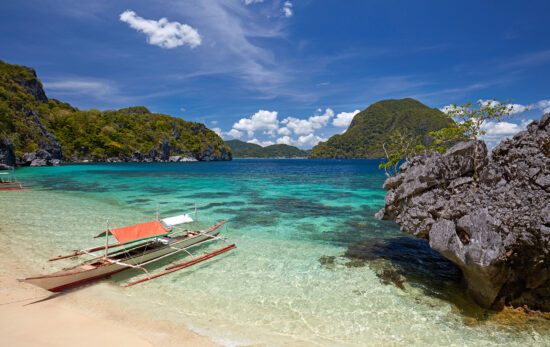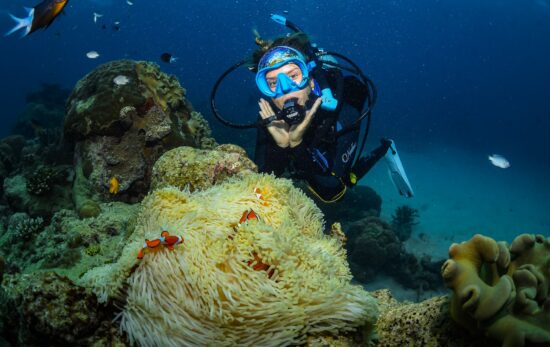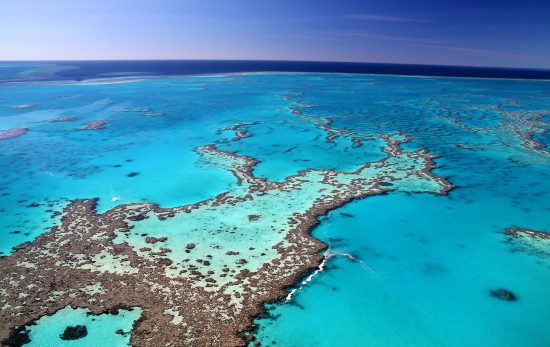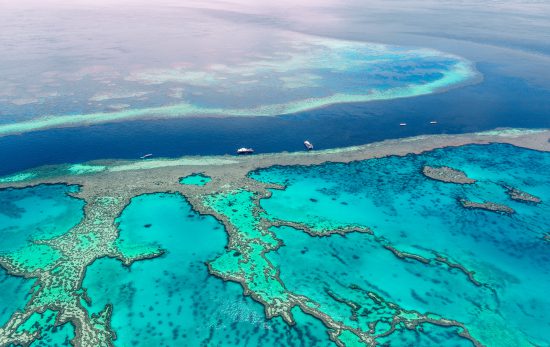Every diver craves warm, colorful coral reefs. There is nothing more invigorating than the sight of multitudes of tropical fish crowding together in schools of thousands. Relaxing and beautiful, coral reefs never fail to astound even the most seasoned divers, and you never know what could be hiding behind the next looming brain coral or softly waving sea fan.
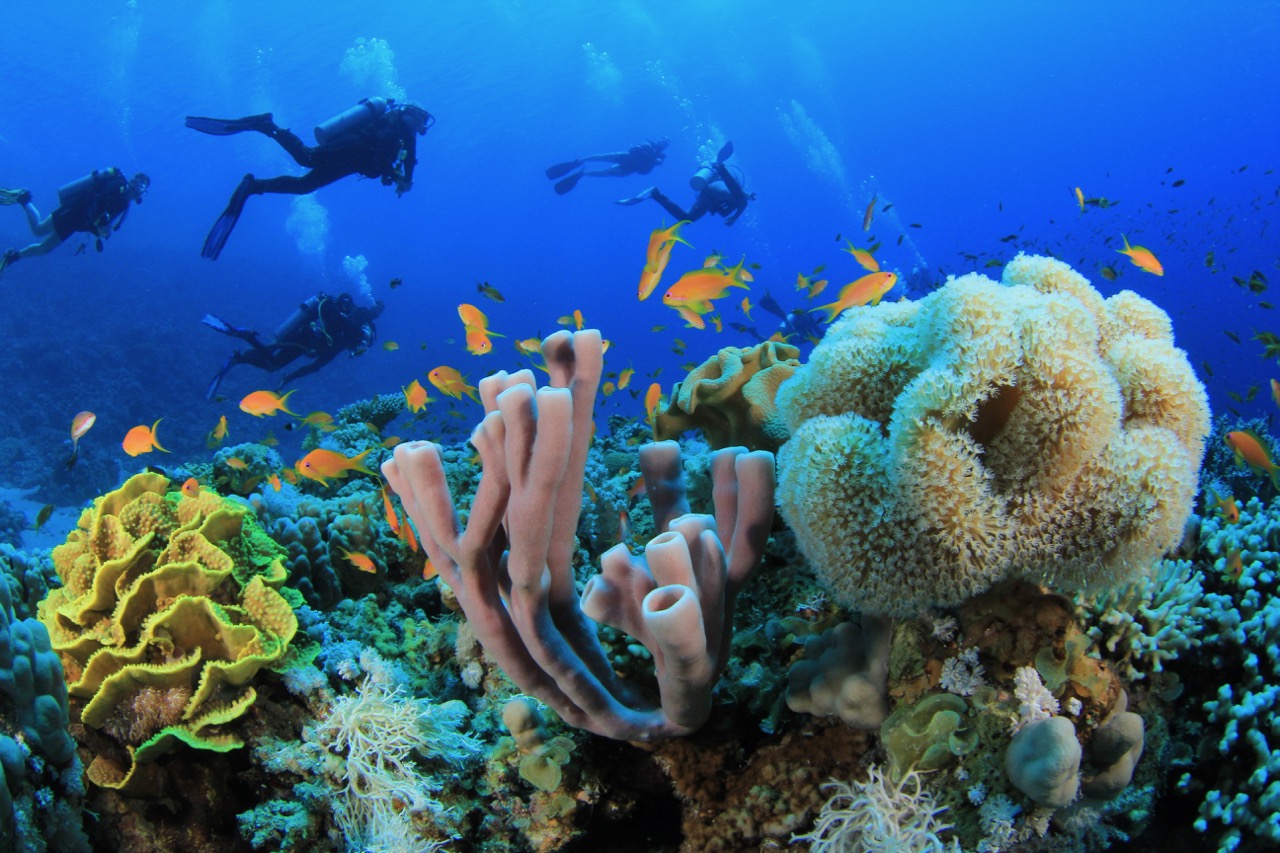
A Little Bit About Coral Reefs
So, what exactly is a coral reef? Coral reefs are living organisms, formed by millions upon millions of coral polyps. Each coral formation is made out of genetically identical polyps. There are many species of coral, each as different from one another as the variety of fish in the sea. Speaking of which, certain corals have tentacles that can reach out and grab fish, though most species use photosynthesis to survive.
Certain varieties of corals can only be found in specific locations. Some corals are only found in deep, cold water, like the Lophelia, a snow white coral with fluted branches. However, many species of coral prefer shallow, warm water. Other corals are found around the world, like brain coral.
When coral dies, usually because of pollution, increased water temperatures or boat damage, it turns a greyish white. A sure sign of a sickly reef is a graveyard of sun-bleached corals. Healthy reefs, however, are bright and vibrant, a coalescence of colors unlike you’ve ever dreamed. If you look closely, you can see the individual polyps, going about their sedentary business.
A heads up to those diving in the Caribbean and Southeast Asia: Fire coral is a prevalent and potentially dangerous form of “coral.” Though fire coral is technically not coral, it is easily recognizable with its bright yellow branches. When brushed against, fire coral shoots out tiny tentacles, similar to a jellyfish, resulting in a painful burn. See, even “coral” can defend itself!
10 Must-Explore Destinations
Let’s dive into 10 of the most astounding coral reef destinations that scuba divers will surely want to visit.
10. Apo Reef, Philippines
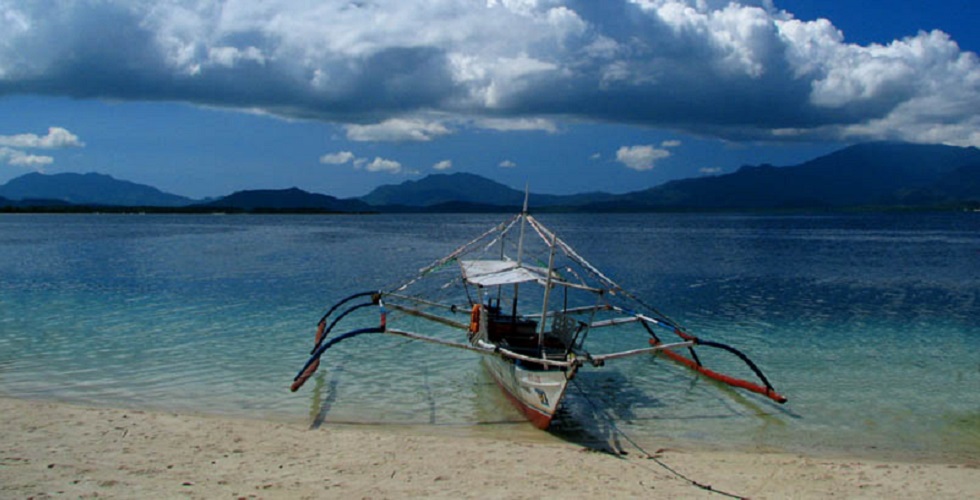
The second largest reef in the world is the Apo Reef, off the Philippines, which covers an astounding 67,877 acres (271,139 square meters). You can find the reef off the shores of Mindoro Island, and many of which are found in the Apo Reef Natural Park. Concealed by a mangrove forest, the reef is a wonderland, just begging to be explored. Fishing is not allowed on the reef, and this protected place thrives with activity, with more fish making appearances here every year.
A couple of favorite dive sites are Shark Ridge and Hunter’s Rock. Shark Ridge is a great place to get your shark fix, where reef sharks are abundant. They are most active in the early morning and evening. Hunter’s Rock is an incredible pinnacle, stretching up to nearly touch the surface of the water. The currents here can make it a little dicey for inexperienced divers, but braving the waters is well worth the trip.
9. Mesoamerican Reef, Caribbean Sea
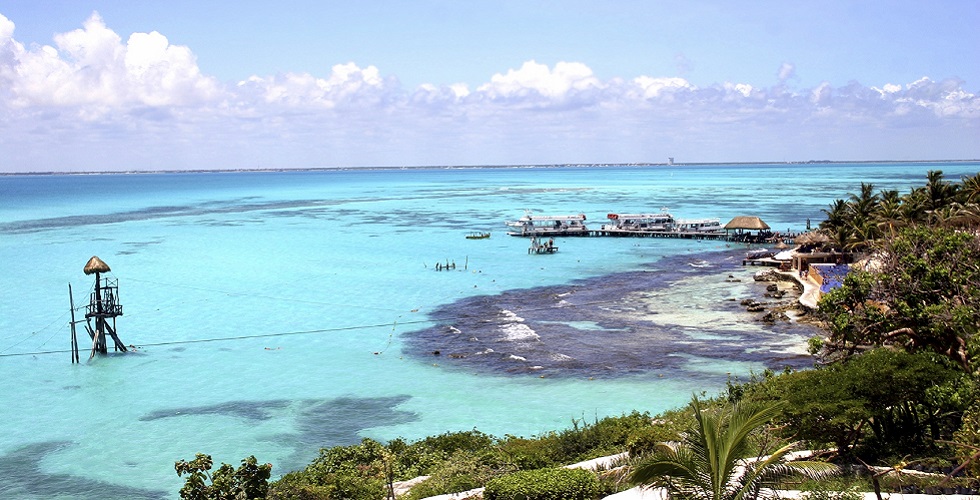
Stretching along the coast for almost 700 miles (1,126 kilometers), the Mesoamerican Reef graces Mexico, Belize, Guatemala, and Honduras. This extensive reef system has a plethora of fish and coral species, a veritable pantheon of marine life.
Some of the very best dives can be found along the Caribbean coast of Honduras, and especially around the island of Roatan. A couple of great dive sites are Mary’s Place and the Odyssey Wreck. Mary’s Place is by far the most popular dive site on Roatan, a mighty crevasse formed by ancient volcanic activity. Keep an eye out for the rare black corals found clinging to the walls. The Odyssey is the largest wreck in the area, and is a great place to get your wreck diving certification.
Off the shoreline of Mexico you can see huge staghorn coral formations, lovely places for fish to spend their time. These terrific structures are one of the most important (and endangered) coral reefs. You can see whale sharks and whales on their migrations, farther out.
8. Great Chagos Bank, Maldives
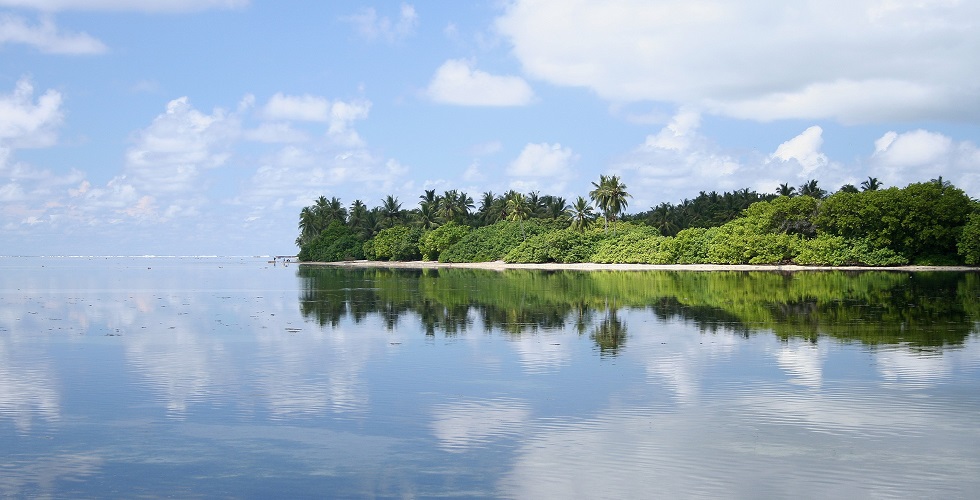
Made up of a series of gorgeous atolls, the Great Chagos Bank is the largest reef system in the Indian Ocean. Formed by volcanic activity, the islands here only poke 4.9 ft (1.5m)above the sea, making the Maldives the lowest lying country in the world.
The white sand beaches and sunny blue skies draw visitors from around the world to the Maldives. Because the diving her is so spectacular, there are dive shops scattered all around these islands. Starting your experience on Kuredu Island is a good idea as this gorgeous spot is home to plenty of sea turtles and crystal clear waters.
The incredibly clear water here makes the Chagos Bank an excellent spot to practice your underwater photography. An especially nice area to snap some shots is Kudarah Thila, near South Ari Atoll. This is a protected marine area, and there is a unique collection of sponges to be seen here. If you have a dive light, don’t miss out on the overhanging coral reefs and impressive arch.
7. Great Florida Reef, USA
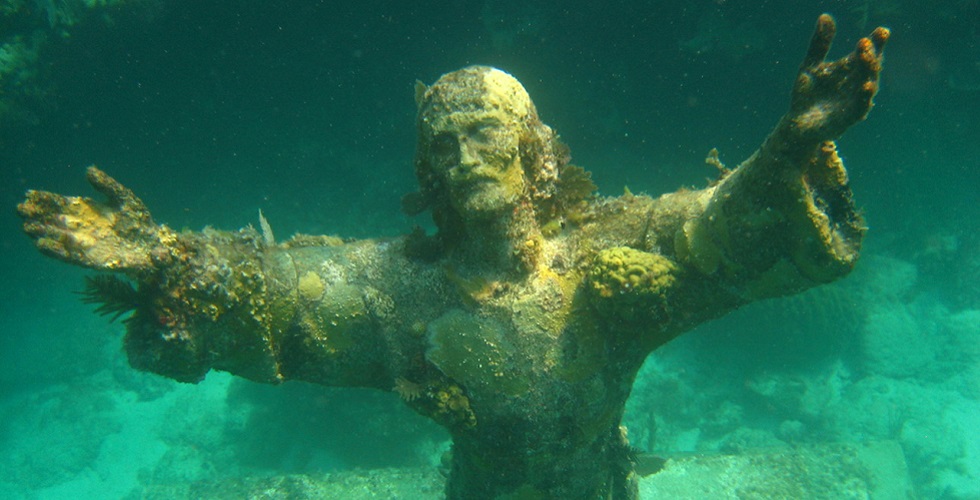
As the only coral reef in North America, the Great Florida Reef off the Florida Keys is well worth exploring. It makes its way from Dry Tortugas National Park up to Key Biscayne.
Charter a boat or go on an easy day trip from one of the Keys to get to the reef. Because it is found several miles from the shoreline, there is no way to do shore dives here. A great option for the more adventurous among us is to rent a kayak and head out into the gorgeous blue waters. It is remarkably shallow for a vast distance, heading out from the Keys. Be sure you know your destination well before you get there, no scuba spot is worth getting lost out at sea.
Head to the John Pennekamp Coral Reef State Park to explore this epically beautiful destination. Some favorite dive sites are the Molasses Reef and the Christ of the Abyss. Molasses Reef is a quintessential spot to explore the Great Florida Reef, with fascinating coral formations and copious marine life. Pictured above, the famous Christ of the Abyss was placed beneath the cool blue water in 1961 in order to honor scuba divers around the world. You can find this 11 ft (3.3m) statue near the Key Largo Dry Rocks.
6. Saya de Malha, Indian Ocean
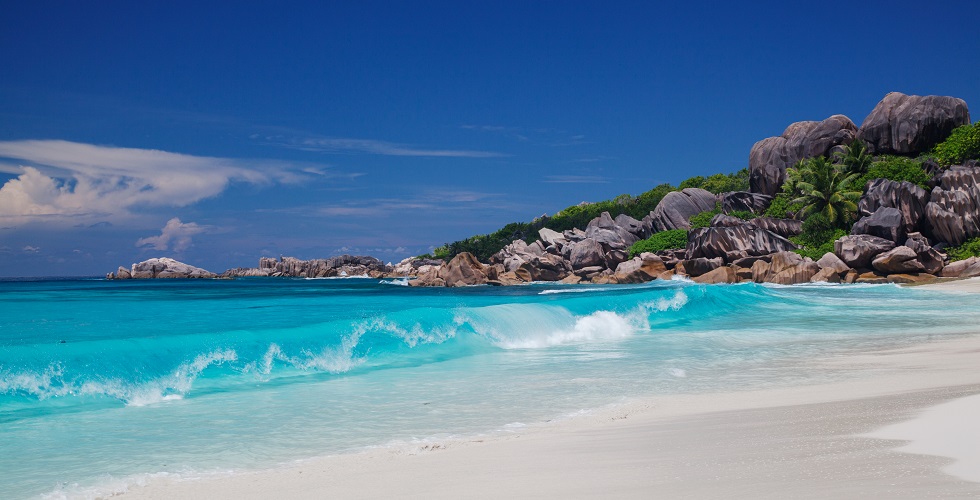
To explore the largest submerged banks on the globe, head to Saya de Malha, a ridge that connects the epic islands of Seychelles and Mauritius, north of Madagascar. These breezy, sunny isles are an idyllic place to spend your diving holiday, and are relatively untouched by foreign hands.
This is a blue whale breeding ground, so be sure to come during this spectacular event. Though they can be found throughout the equatorial Indian Ocean throughout the year, the warmer months make the best place for breeding and calving.
See the green sea turtles feeding on sea grasses and seaweed. There is even a sea turtle festival held in Seychelles each year during August.
During your trip to the stellar dive sites here keep an eye out for the multitude of colorful nudibranchs that make their homes here.
5. New Caledonian Barrier Reef, New Caledonia
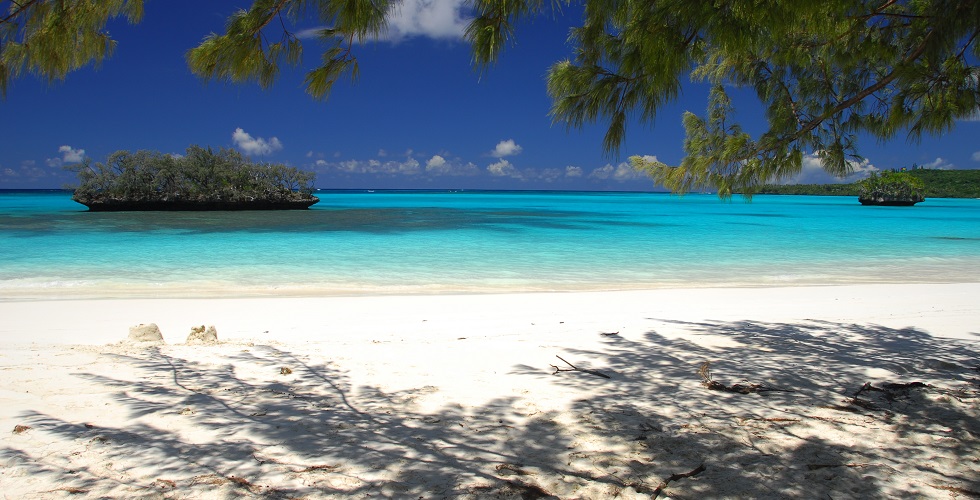
Out in the Pacific Ocean divers can find the New Caledonian Barrier Reef. The second longest reef in the world, there are still many parts of this reef that are unexplored. Here, you may even run across creatures that remain unnamed, and marine biologists make their way out into the endless blue to encounter and classify these new species.
Enclosed within the reef is a breath-taking lagoon of more than 9,000 square miles (14,484 square kilometers). Depths meander around 80 feet (24 meters), giving divers plenty of space to explore.
There are a couple of dive sites that aren’t to be missed on your exploration of the New Caledonian Barrier Reef: Daa Djare Ile des Pins boasts two large coral boulders, teeming with life. Swimming between the two boulders is a surreal experience. Donga Hienga Hienghene is a spectacular spot to find ribbon eels. Because it is so vast, you have plenty of options, and no dive is a bad dive.
4. Andros Coral Reef, Bahamas
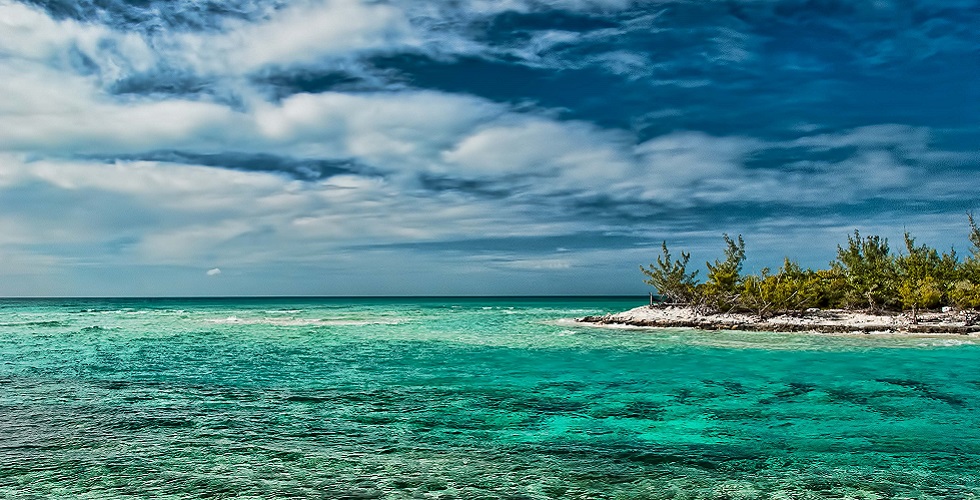
Between the islands of Nassau and Andros, in the Bahamas the Andros Coral Reef awaits. This exceptional reef is distinctive because of its orientation. Because it lies on the verge of a massive oceanic trench, the corals head down into the crevasse instead of flat along the sea floor. Some coral formations are even found all the way down to 6,000 feet (1828 meters) in depth. A whole host of weird, wild creatures are found busying themselves at this astounding depth.
If you enjoy diving at uncrowded dive sites, book your trip from June-October. This is low season in the Bahamas. Diving in the Bahamas changes little from month to month.
A few notable dive sites can be found around Andros Island. Jean’s Dream is a gorgeous coral garden dive, where you can see tremendous gorgonians and parrotfish. Another lovely spot is Jeff’s Ladder, which is a particularly excellent place to pick up a certification or two.
3. Red Sea Coral Reef, Red Sea
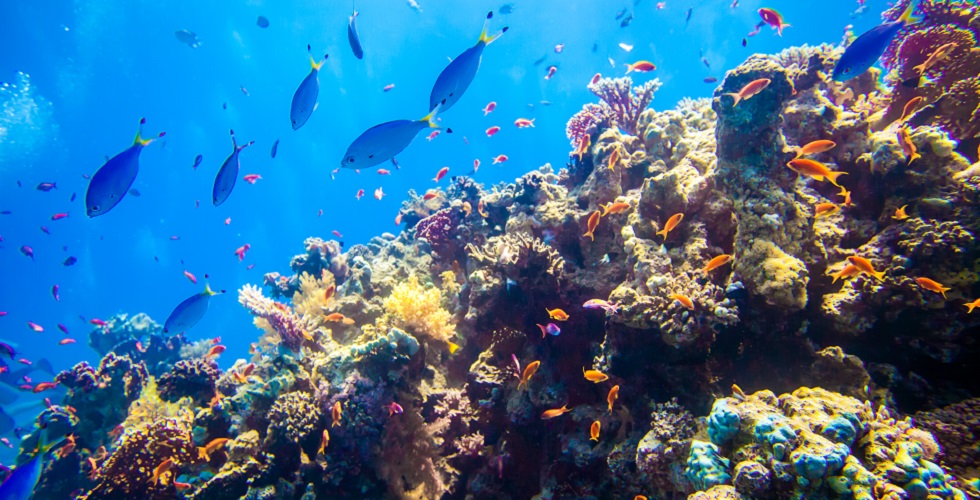
Found off the shores of Egypt, Israel, and Djbouti, the Red Sea Coral Reef is one of the oldest reefs in the world, dating back five to seven thousand years. With unique endemic species and a myriad of types of fish, the Red Sea Reef is unlike any other in the world.
Come explore the Dahab Blue Hole known grimly as “The Diver’s Cemetery” Though a notoriously dangerous dive, those that brave the depths are rewarded with a diving experience unlike any other.
The great thing about diving in Egypt is it’s possible all year round with water temperatures ranging from 21°C to 28°C and you can expect visibility from 20-50 mtrs .
You can see some astounding sights at the Ras Mohamed National Park, a park with an abundance of dive sites to explore. The reefs here are world renowned, and well worth the trip.
2. Belize Barrier Reef, Belize
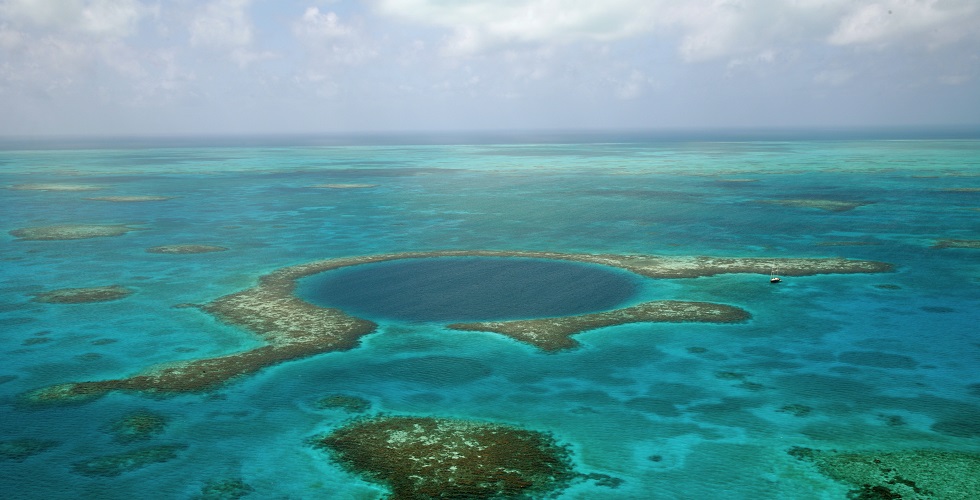
Though it is officially a part of the Mesoamerican Coral Reef, the Belize Barrier Reef deserves a section all its own. This unbelievable spot is protected by the UNESCO World Heritage organization, and is teeming with wildlife.
With more than 400 islands, white sandy beaches, the longest unbroken barrier reef in the Western Hemisphere and 298 kilometers/185 miles of coastline, Belize is a world-class scuba diving destination.
Don’t miss out on the Blue Hole, a fantastic formation that can be seen from space. The cobalt blue maw of the hole is a portal to a whole new world. Once you head through the first several meters the walls expand, and an inky darkness begins to envelop you and your surrounding environment. Here, you may be lucky enough to see hundreds of bull sharks congregate, seeking the relative safety of the high walls.
1. Great Barrier Reef, Australia
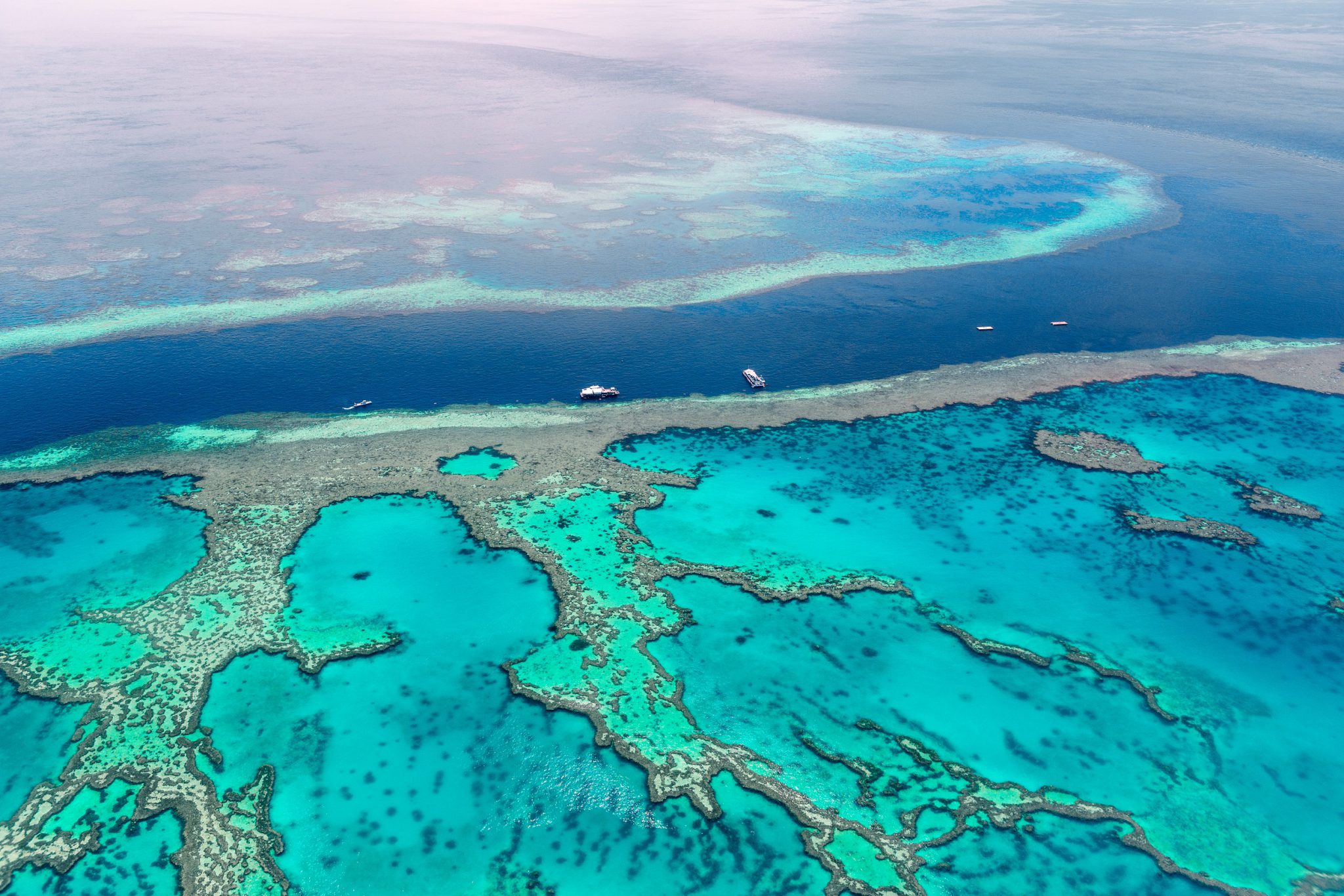
Made up of thousands of individual reef systems, the Great Barrier Reef is the largest coral reef in the world. Because of its incredible size and abundance of marine life, the Great Barrier Reef is a site of pilgrimage for scuba divers from around the world. Setting out from Queensland, Australia, divers can explore this tremendous destination as they please.
A designated UNESCO World Heritage Site, Queensland’s gorgeous Great Barrier Reef stretches 1,400 miles down the east coast of Australia. Endless diving adventures can be had around its 600 islands and 2,900 individual reefs.
As the earth’s largest reef system, you can see just about everything when you go diving at the Great Barrier Reef. Dwarf minke whales, manta rays, sharks and cuttlefish parade around in abundance. The turtles and sea snakes are supersized.
Some of the very best dives in the world are found here. North Horn is a popular favorite, where you can dive with sharks on the Osprey Reef.
Australia’s Great Barrier Reef is so large, in fact, that it is the only living organism that can be seen from space – Incredible!
Which will you visit first?
Don’t miss out on these unbelievable coral reefs, homes for millions of creatures, great and small. Diving on these expansive coral reefs will blow you away, exposing you to a fantastic array of sights, from awesome geologic formations to weird and wonderful marine life. Though the types of animals vary by destination, you can always be sure to run into something unexpected and exciting.
Article written by guest blogger, Bridget Pearson

